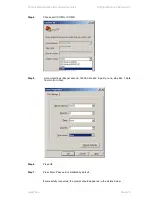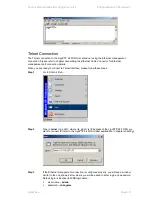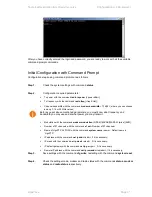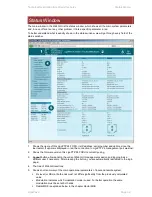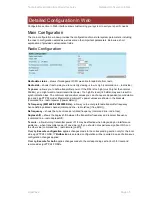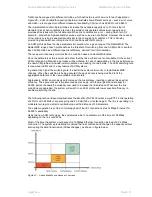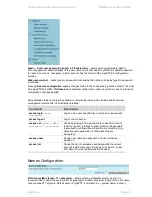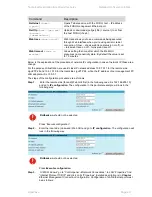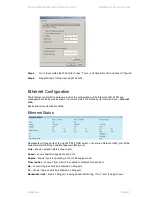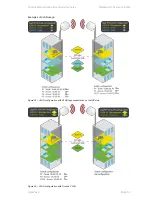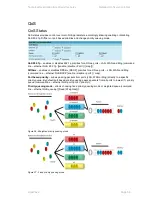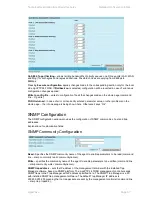
Technical Description &
Configuration Guide
Detailed
Configuration in Web
LigoWave
Page 43
Pressing
Execute configuration
applies changes made to the corresponding section only for the local
side LigoPTP 24 FODU. If
Rollback on
is selected, configuration will be reverted in case of erroneous
configuration changes applied.
Other Configuration
Web refresh (2 .. 600 sec)
– allows specifying time interval of Web data refreshing. The default value
is 5 seconds. You can choose between 2 and 600 seconds (10 minutes) (command line
– web refresh
<web refresh time>);
Time (Usage: YY-MM-DD HH:mm:ss)
– allows changing system date and time manually by entering
date and time in specific syntax.
Set local machine time
button forces system to use the time set on
your PC or laptop, from which you are connected to the Web interface (command line
– system time
[yyyy-mm-dd hh:mm:ss]);
Pressing
Execute configuration
applies changes made to the corresponding section only for the local
side LigoPTP 24 FODU. If
Rollback on” is selected
, configuration will be reverted in case of
erroneous configuration changes applied.
Write to config file
– writes to configuration file all the changes made on the whole page (command
line
– cfg write);
Immediate CPU restart
– restarts LigoPTP 24 FODU you are connected to ((command line – system
reset);
Note that after restarting the LigoPTP 24 will use only those settings, which are written to
the configuration script. Other settings will be set to default values
Additional system commands of the Telnet/serial interface is provided in the table below:
Command
Description
System status
Displays the name of the device and its uptime.
System inventory
[sho ]
Displays the LigoPTP 24 FODU product code, serial
number and additional information.
System aliases
[list|all|basic|off|add
|remove|clear]
list
– shows the alias list and whether the aliases are
going to be used. The user can choose whether to see all
the aliases (adding the argument “all”), built-in aliases
(“built-in”), or optional aliases (“optional”) , or user aliases
(“user”);
all
– all the aliases will be used;
basic
– only basic (built-in, hidden and user) aliases will
be used;
off
– no aliases will be used;
add
– if two arguments are given, creates an alias of the
second argument, named as the first argument. If one
argument given, alias command tries and loads the
aliases from a file specified by the argument;
remove
– removes the alias specified by the argument;
clear
– removes all the user aliases.
System commands
[
show|help]
show
– displays all available commands;
help
– displays available help messages for all
commands.

